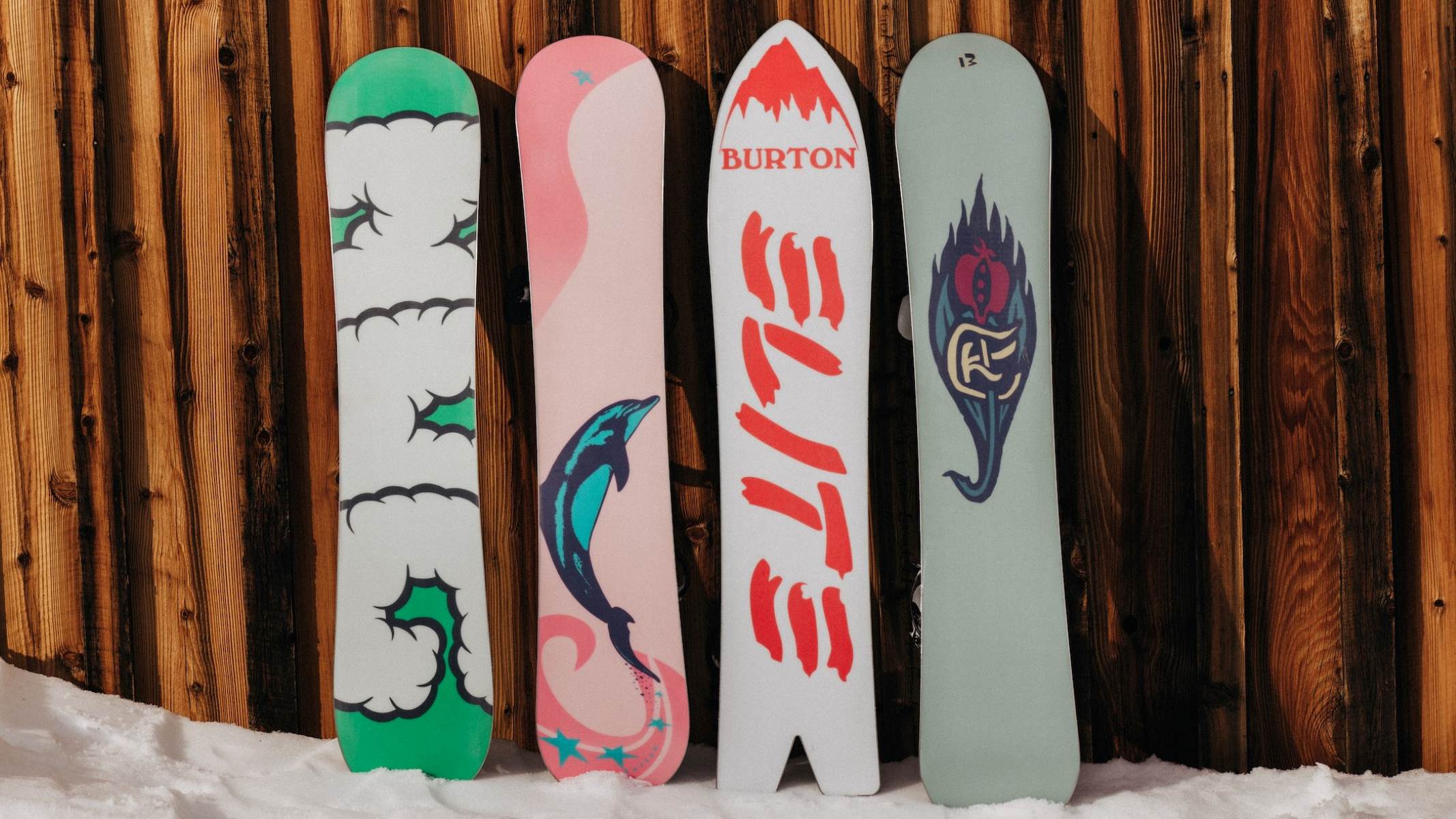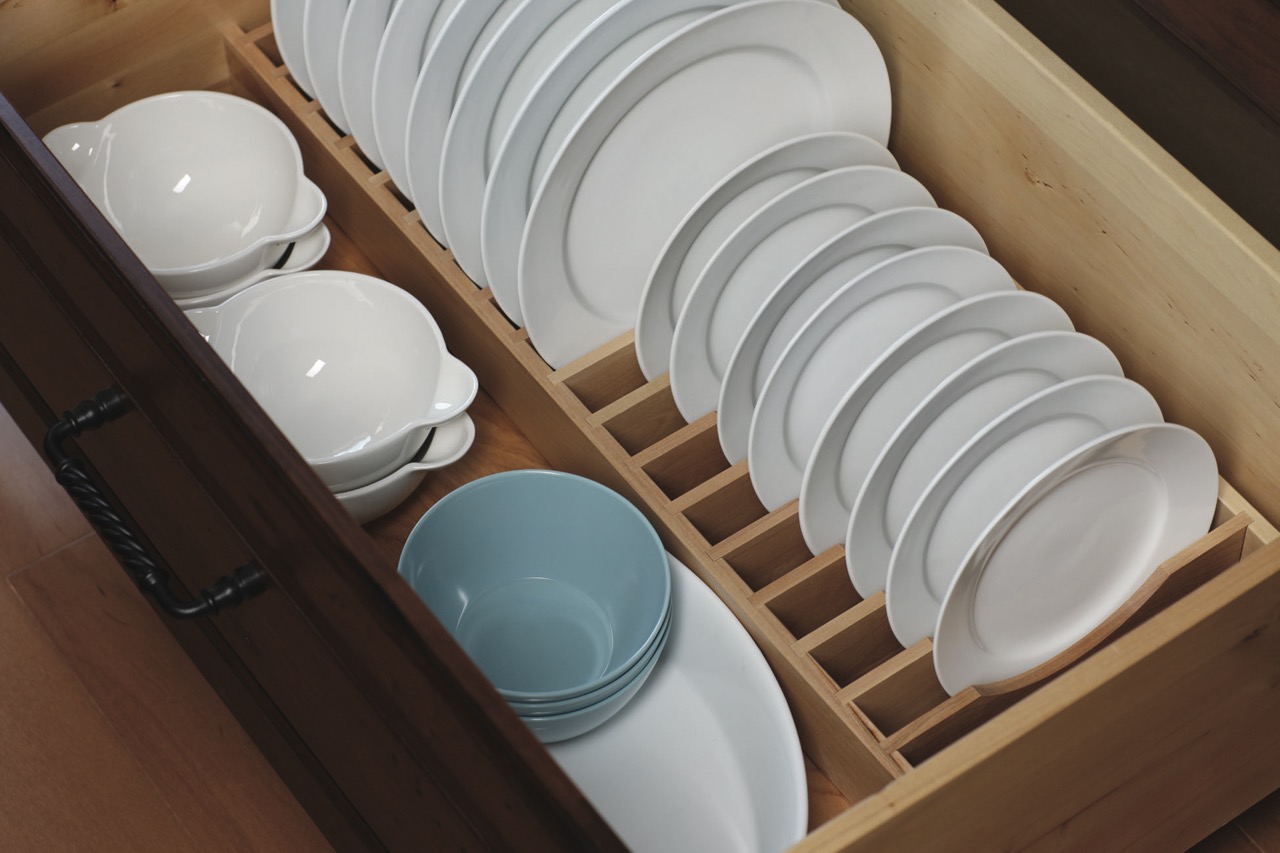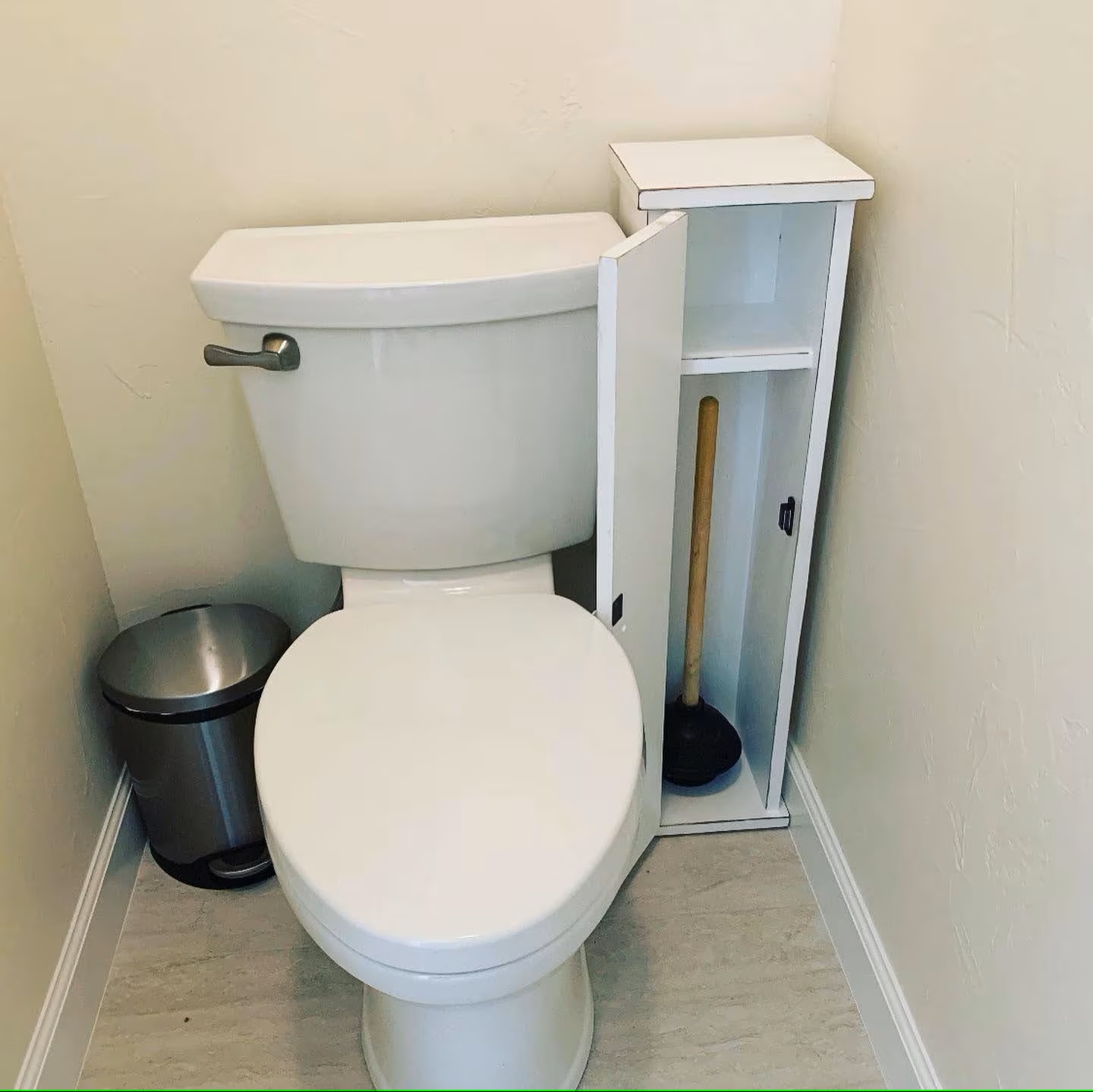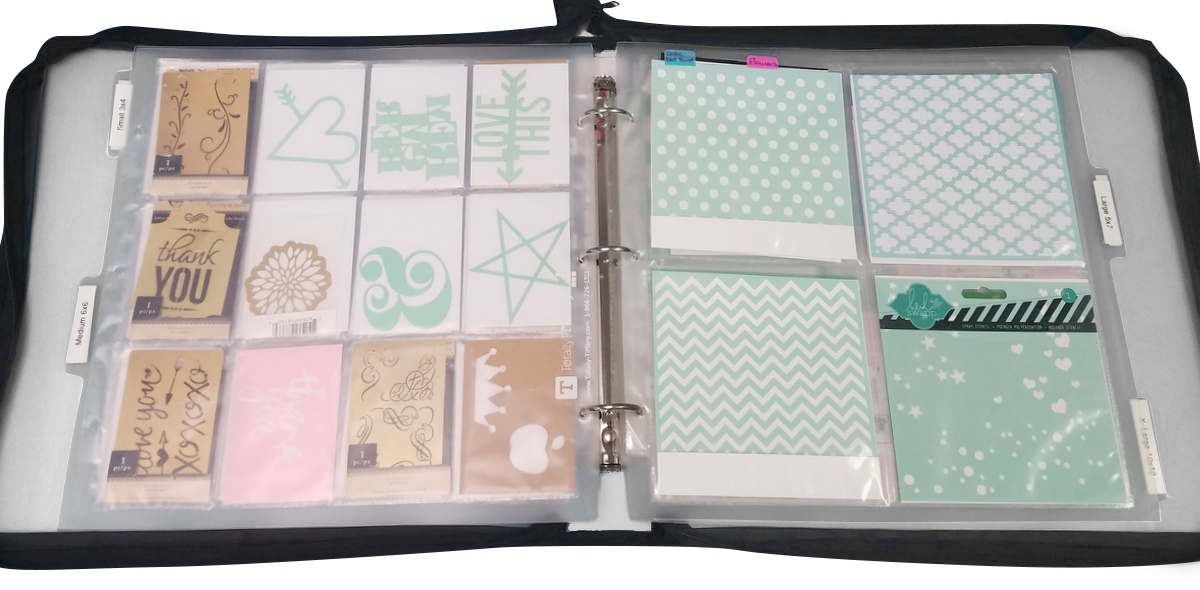

Articles
How To Store Snowboard
Modified: January 23, 2024
Learn the best techniques for storing your snowboard in this comprehensive guide. Discover tips and tricks to keep your equipment in top condition all year round.
(Many of the links in this article redirect to a specific reviewed product. Your purchase of these products through affiliate links helps to generate commission for Storables.com, at no extra cost. Learn more)
Introduction
Storing your snowboard properly is essential to ensure its longevity and performance. Whether you’re storing your snowboard during the off-season or just for a short period of time, taking the right steps will help protect your investment and keep it in top shape for the next snowboarding season. In this article, we will guide you through the process of storing your snowboard, from choosing the right storage space to proper maintenance and inspection.
When it comes to storing your snowboard, there are a few key factors to consider. First, you need to find the right storage space that provides the ideal conditions for your snowboard. This includes a cool and dry environment, away from direct sunlight and extreme temperatures. Additionally, you need to prepare your snowboard for storage by cleaning and drying it thoroughly. Removing the bindings and storing them separately is also recommended to prevent any pressure points or damage to the board. Lastly, choosing the proper snowboard bag or cover is crucial to protect your board from dust, moisture, and other potential hazards.
Properly storing your snowboard will not only extend its lifespan but also help maintain its performance on the slopes. By following the steps outlined in this article, you can ensure that your snowboard stays in optimal condition and is ready for action when the next snowfall arrives.
Key Takeaways:
- Properly storing your snowboard is crucial for preserving its condition, protecting your investment, and ensuring optimal performance for years to come. Follow the steps outlined to confidently store your snowboard and maximize its longevity.
- Regular maintenance and inspections of your stored snowboard are essential to identify potential issues and ensure top condition. By taking these steps, you can prolong your snowboard’s lifespan and be confident in its performance on the slopes.
Read more: How To Store A Snowboard
Choosing the Right Storage Space
When it comes to storing your snowboard, choosing the right storage space is crucial to maintain its condition. Here are some tips to help you select the ideal storage area:
- Cool and Dry Environment: It’s important to store your snowboard in a cool and dry environment. Excessive heat and humidity can damage the board’s materials and affect its performance. Look for a space that is free from moisture and has stable temperature levels.
- Away from Direct Sunlight: Sun exposure can cause the board’s graphics to fade and the base material to deteriorate. Avoid storing your snowboard in an area that receives direct sunlight for extended periods.
- Stable Temperature: Fluctuations in temperature can stress the snowboard’s materials and lead to warping or cracking. Find a storage space where the temperature remains relatively stable throughout the year.
- Secure and Dust-Free: Keep your snowboard in a secure location to protect it from theft or accidental damage. Additionally, choose a storage space that is free from dust and debris, as these can affect the board’s performance and require additional cleaning before use.
- Avoid Extreme Temperatures: Extreme heat or cold can negatively impact your snowboard. Avoid storing it in areas such as attics, garages, or sheds that are subject to extreme temperature fluctuations.
When considering storage options, you might want to look into using a dedicated snowboard storage rack or wall mount. These allow you to store your snowboard vertically, which can help prevent warping and save space. Alternatively, you can use a padded snowboard bag or a snowboard-specific storage container to protect the board from damage and dust.
By choosing the right storage space, you can ensure that your snowboard remains in top condition and is ready to hit the slopes when the snow season rolls around again.
Preparing Your Snowboard for Storage
Before storing your snowboard, it’s important to take a few steps to prepare it properly. Here’s how to get your snowboard ready for storage:
- Cleaning and Drying: It’s essential to clean your snowboard thoroughly to remove any dirt, debris, or moisture that may have accumulated during use. Start by wiping down the surface of the board with a damp cloth to remove any dirt or grime. Pay special attention to the edges and base, ensuring they are clean and free from any residue. Allow the board to air dry completely before proceeding to the next step.
- Removing Bindings: It’s advisable to remove the bindings before storing your snowboard. This will relieve any pressure points on the board and prevent the bindings from becoming loose or causing damage during storage. Use a screwdriver to remove the bindings carefully, following the manufacturer’s instructions or consulting a professional if needed. Keep the bindings and screws in a safe place for reinstallation later.
- Inspecting for Damage: Take the time to inspect your snowboard for any signs of damage or wear. Check the edges for any chips or cracks and inspect the base for any deep scratches or gouges. If you notice any significant damage, it’s recommended to have it repaired by a professional before storing it.
- Applying a Protective Layer: To further protect your snowboard, consider applying a layer of wax before storage. Waxing the base of the board helps prevent drying and oxidation, which can lead to deterioration over time. Apply a thin layer of snowboard wax following the manufacturer’s instructions, ensuring that it covers the entire base evenly.
By following these steps, you can ensure that your snowboard is clean, dry, and free from any potential damage or issues before you store it. This will help maintain its condition and performance, ensuring that it’s ready for your next snowboarding adventure.
Cleaning and Drying Your Snowboard
Properly cleaning and drying your snowboard before storage is crucial to prevent the buildup of dirt, moisture, and potential damage. Here are some steps to effectively clean and dry your snowboard:
- Remove Excess Snow: Start by removing any excess snow from your snowboard. Use a snow scraper or a plastic edge tool to gently scrape off any snow that may have accumulated on the surface, edges, and bindings. Be careful not to apply too much force to avoid scratching or damaging the board.
- Wipe Down the Surface: Take a damp cloth or sponge and wipe down the surface of the snowboard. This will help remove any remaining dirt, grime, or salt residue from the snow. Pay attention to the edges and bindings, ensuring they are clean and free from any debris.
- Clean the Base: To clean the base of your snowboard, fill a bucket with lukewarm water and a mild snowboard-specific detergent. Avoid using harsh chemicals or abrasive cleaners, as they can damage the base material. Dip a soft brush into the soapy water and gently scrub the base in a circular motion to remove any dirt or wax residue. Rinse the brush frequently to prevent redistributing dirt.
- Rinse and Dry: After cleaning the base, rinse your snowboard with clean water to remove any soap residue. Use a clean, dry cloth or towel to pat the board dry, paying extra attention to the edges and bindings. Avoid using excessive force or rubbing the board too vigorously, as this can cause damage to the snowboard’s surface.
- Air Dry Completely: Once your snowboard is clean and dry, it’s crucial to allow it to air dry completely before storage. Place your snowboard in a well-ventilated area with good airflow, away from direct sunlight or heat sources. This will ensure that all moisture evaporates from the board and prevent the growth of mold or mildew.
By properly cleaning and drying your snowboard, you can maintain its performance and prevent any potential damage or issues. Taking the time to care for your snowboard before storage will ensure that it’s ready to hit the slopes when the winter season arrives.
Removing Bindings and Storing Them Separately
When storing your snowboard, it’s advisable to remove the bindings and store them separately. This not only helps protect the board from potential damage but also allows you to properly maintain and adjust your bindings. Here’s how you can remove and store your snowboard bindings:
- Find a Suitable Work Area: Start by finding a clean and well-lit area where you can safely remove the bindings. A workbench or table can be ideal for this purpose.
- Gather the Necessary Tools: Prepare the tools you will need to remove the bindings, such as a screwdriver or wrench, depending on the type of bindings you have. Make sure you have the correct size and type of tool for your bindings.
- Loosen the Binding Screws: Use the appropriate tool to loosen the screws that secure the bindings to the snowboard. Depending on the type of bindings, there may be multiple screws holding each binding in place. Loosen the screws until they are all fully disengaged, but avoid removing them completely to prevent misplacement.
- Remove the Binding Straps: Once the screws are loose, you can remove the binding straps from the base of the bindings. Carefully unhook or release the straps from their attachment points, ensuring not to stretch or damage them in the process.
- Store the Bindings Properly: After removing the bindings from your snowboard, it’s crucial to store them properly. Clean the bindings using a damp cloth to remove any dirt or debris. Ensure that they are completely dry before storage to prevent any moisture-related damage. Store them in a separate bag or container, away from dust and extreme temperatures.
- Label and Organize: To make it easier to reinstall the bindings in the future, consider labeling and organizing them. You can use small labels or tape to mark which binding is for the left or right foot, preferable stance angles, or any other specific preferences you have. This will save you time and effort when you’re ready to reattach the bindings to your snowboard.
By removing and storing your snowboard bindings separately, you can protect your board from potential damage and ensure that the bindings are properly maintained. This allows for easy adjustments and ensures that your bindings are ready for optimal performance when you hit the slopes again.
Read more: How To Store Snowboard Boots
Waxing and Tuning Your Snowboard
Waxing and tuning your snowboard are essential steps in maintaining its performance and ensuring a smooth ride on the slopes. Waxing helps protect the base of the snowboard and enhances its gliding abilities, while tuning ensures that the edges are sharp and in optimal condition. Here’s how you can wax and tune your snowboard:
- Prepare Your Work Area: Start by finding a suitable work area where you can wax and tune your snowboard. Ideally, this should be a well-ventilated space with good lighting and a stable surface such as a workbench or table.
- Clean the Base: Before applying wax, make sure the base of your snowboard is clean. Use a snowboard-specific base cleaner and a cloth or brush to remove any dirt, debris, or old wax from the surface. Take extra care around the edges to ensure they are thoroughly cleaned.
- Apply the Wax: Select a suitable wax for the current snow conditions or use an all-temperature wax if you’re unsure. Apply the wax to the base of the snowboard by holding the wax against a heated iron and dripping it evenly along the length of the board. Spread the wax across the base using the iron, making sure to cover the entire surface.
- Iron and Scrape: Once the wax is applied, use the heated iron to evenly distribute the wax across the base. Move the iron in long, smooth strokes, allowing the wax to melt and penetrate the base. After ironing, let the wax cool and harden for a few minutes. Use a plastic wax scraper to remove the excess wax by holding the scraper at a slight angle and applying firm pressure. Scrape from nose to tail to remove any excess wax and create a smooth, even surface.
- Tune the Edges: To ensure your snowboard’s edges are sharp and in optimal condition, you’ll need to tune them. Use a snowboard-specific edge tool to file the edges, following the manufacturer’s recommended angle. Gently file the edges, applying consistent pressure and working from tip to tail. Take care not to over-file or create uneven edges.
- Deburr and Polish: After filing the edges, use a deburring stone or tool to remove any burrs or rough edges. Gently rub the stone along the edges to smooth them out. Finally, use a polishing cloth or brush to give the edges a final polish, ensuring they are clean and smooth.
Regularly waxing and tuning your snowboard will help maintain its performance and prolong its lifespan. If you’re unsure or inexperienced in waxing and tuning, it’s recommended to seek advice from a professional or take your snowboard to a reputable ski or snowboard shop for professional servicing.
By properly waxing and tuning your snowboard, you can ensure that it performs at its best and provides you with a smooth and enjoyable ride on the slopes.
Store your snowboard in a cool, dry place to prevent rust and damage. Keep it away from direct sunlight and moisture to maintain its condition for the next season.
Choosing the Proper Snowboard Bag or Cover
Choosing the right snowboard bag or cover is important to protect your snowboard from potential damage or wear during storage and transportation. Here are some factors to consider when selecting a snowboard bag or cover:
- Size and Fit: Ensure that the bag or cover is the appropriate size for your snowboard. It should comfortably accommodate the length and width of your board, allowing for easy insertion and removal. Look for adjustable straps or compression features to secure the board in place and prevent any unnecessary movement.
- Padding and Protection: Look for a bag or cover that provides sufficient padding to protect your snowboard from impacts and scratches. Ideally, it should have a padded inner lining or foam inserts to cushion the board during storage and transportation. This will help prevent any damage to the board’s edges, base, or bindings.
- Waterproof or Water-Resistant: Depending on your needs, consider whether you require a waterproof or water-resistant snowboard bag or cover. If you anticipate exposure to moisture or if you’re transporting your snowboard through wet or snowy conditions, a waterproof option can provide additional protection against water damage.
- Accessibility and Additional Storage: Some snowboard bags or covers come with additional pockets or compartments for storing accessories such as goggles, gloves, or tools. These can be convenient for keeping all your snowboarding gear together and organized. Consider your storage needs and opt for a bag or cover that offers the right level of accessibility and storage features.
- Durability and Quality: Choose a snowboard bag or cover made from sturdy and durable materials that can withstand frequent use and potential rough handling. Look for reinforced stitching, strong zippers, and reliable fastening mechanisms to ensure longevity and protection for your snowboard.
- Portability and Convenience: Consider the ease of carrying and transporting the snowboard bag or cover. Look for features such as comfortable padded shoulder straps, handles, or wheels that make it convenient to move the bag from one location to another. A lightweight design can also be beneficial for ease of travel.
Take the time to research and compare different options to find a snowboard bag or cover that meets your specific needs and preferences. Reading customer reviews and seeking recommendations can also help you make an informed decision.
By choosing the proper snowboard bag or cover, you can keep your snowboard safe and protected from damage, ensuring that it’s in good condition and ready for your next snowboarding adventure.
Storing Your Snowboard in a Vertical Position
Storing your snowboard in a vertical position is ideal for maximizing space and minimizing the risk of warping. Here are some steps to properly store your snowboard in a vertical position:
- Clean and Prepare: Before storing your snowboard, ensure that it is clean and dry. Follow the steps outlined earlier to clean and dry your snowboard thoroughly. This will help prevent any dirt or moisture from causing damage during storage.
- Choose a Suitable Location: Find a location where you can safely store your snowboard in a vertical position. Ideally, this should be a cool, dry space, away from direct sunlight and extreme temperature fluctuations. A garage, basement, or a dedicated snowboard storage area can be suitable options.
- Invest in Storage Racks: Purchase or build a snowboard storage rack that can hold your snowboard securely in a vertical position. Look for racks specifically designed for snowboards, as they will provide the necessary support and stability for your snowboard. Make sure the rack is wide enough to accommodate the width of your snowboard.
- Mount the Snowboard: Carefully mount your snowboard onto the storage rack. Slide the snowboard into the rack, ensuring that it is seated securely in place. Adjust the rack as needed to fit the length of your snowboard.
- Secure the Snowboard: Once mounted, use straps or bungee cords to secure the snowboard to the rack. This will prevent it from accidentally falling or sliding off the rack. Make sure the straps are tight enough to hold the snowboard in place but not too tight to damage the board.
- Check Regularly: Periodically check your snowboard while it is stored in the vertical position. Ensure that it remains securely mounted and that the straps or bungee cords are still in good condition. This will help identify any potential issues and allow for timely adjustments or repairs if needed.
Storing your snowboard in a vertical position not only saves space but also helps maintain the board’s shape and prevents warping. By following these steps, you can safely store your snowboard in a vertical position, keeping it in optimal condition until the next snowboarding season.
Storing Your Snowboard in a Horizontal or Flat Position
Storing your snowboard in a horizontal or flat position is a suitable alternative to vertical storage, especially if you have limited space or specific storage requirements. Follow these steps to properly store your snowboard in a horizontal or flat position:
- Clean and Prepare: Begin by ensuring that your snowboard is clean and completely dry. Follow the earlier instructions for cleaning and drying your snowboard to remove any debris or moisture that may have accumulated during use.
- Choose a Suitable Storage Location: Find a cool and dry area where you can store your snowboard horizontally or flat. This can be a closet, under a bed, or any other space where the board will be protected from extreme temperatures, direct sunlight, and excessive humidity.
- Provide Padding: To protect your snowboard from any potential damage, it’s important to provide padding when storing it horizontally or flat. Lay down a soft blanket, foam mat, or towel to create a cushioned surface for your snowboard.
- Place the Snowboard: Lay your snowboard horizontally or flat on the padded surface. Ensure that the base side is facing upwards and the bindings are not pressing against anything that could cause pressure points or damage.
- Separate the Bindings: If you choose to store your snowboard with the bindings attached, separate them slightly from the board. This helps relieve pressure points and prevents stress on the snowboard. If you have removed the bindings, keep them stored separately in a safe and dry location.
- Cover the Snowboard: To further protect your snowboard, consider covering it with a snowboard bag, a soft cloth, or a dedicated snowboard cover. This will help shield it from dust, dirt, and potential scratches.
- Regularly Check and Rotate: Occasionally check on your snowboard while it is stored horizontally or flat. Ensure that it remains in good condition and that there are no signs of warping or damage. If you store your snowboard for an extended period, consider rotating its position every few months to prevent prolonged pressure on specific areas of the board.
Storing your snowboard in a horizontal or flat position can be a convenient and space-saving option. By following these steps and providing proper padding and protection, you can ensure that your snowboard remains in good condition and ready for the next snowboarding season.
Read more: How To Store Basil From Store
Avoiding Common Storage Mistakes
Properly storing your snowboard is essential to maintain its condition and ensure optimal performance. Avoiding common storage mistakes will help protect your investment and extend the lifespan of your snowboard. Here are some crucial tips to keep in mind:
- Not Cleaning Your Snowboard: Failing to clean your snowboard before storage can lead to the buildup of dirt, debris, and moisture, which can cause damage over time. Always clean and dry your snowboard thoroughly before putting it into storage.
- Storing in Extreme Temperatures: Exposure to extreme temperatures, whether it’s excessive heat or cold, can be detrimental to your snowboard. Avoid storing your snowboard in areas that are subject to temperature fluctuations, such as attics, garages, or sheds.
- Storing While Damp: Moisture can lead to the growth of mold and mildew, which can damage your snowboard. Be sure to fully dry your snowboard before storing it to prevent any moisture-related issues.
- Leaving Bindings Tightened: Storing your snowboard with tightly tightened bindings can create unnecessary pressure points and potentially damage the board. Loosen or remove the bindings before storing your snowboard to alleviate any stress on the board.
- Neglecting Regular Inspections: It’s crucial to periodically check on your snowboard while it is in storage. Look for signs of damage, warping, or any other issues that may have arisen. Regular inspections allow you to address any problems in a timely manner.
- Improper Storage Position: Whether you choose to store your snowboard vertically or horizontally, ensure that it is properly supported and protected from potential damage. Follow the recommended storage guidelines and utilize appropriate storage racks or padded surfaces.
- Using Improper Storage Containers: Using the wrong container or bag to store your snowboard can result in inadequate protection. Invest in a snowboard-specific bag or cover that offers padding and is suitable for the dimensions of your snowboard.
- Forgetting Waxing and Tuning: Regularly waxing and tuning your snowboard is essential for maintaining its performance. Don’t forget to perform these maintenance tasks before storing your snowboard. Waxing helps protect the base, while tuning keeps the edges sharp and in optimal condition.
By avoiding these common storage mistakes, you can ensure that your snowboard remains in top condition and is ready for action whenever the snow starts falling again. Proper storage practices will help prolong the lifespan of your snowboard and maximize your enjoyment on the slopes.
Regular Maintenance and Inspection of Stored Snowboard
Even when your snowboard is in storage, it’s important to perform regular maintenance and inspections to ensure its continued performance and longevity. Here are some key steps for maintaining and inspecting your stored snowboard:
- Cleaning: Periodically clean your snowboard while it is in storage to remove any dust or debris that may have accumulated. Use a soft cloth or brush to gently wipe down the board’s surface, edges, and bindings. This will help prevent the buildup of dirt and maintain the board’s performance.
- Check for Damage: Inspect your snowboard for any signs of damage, such as dings, gouges, or cracks. Pay close attention to the base and edges, as these areas are more susceptible to wear and tear. If you notice any significant damage, consider having it repaired by a professional before using the snowboard.
- Monitor for Warping: Warping can occur over time if a snowboard is stored improperly or placed under excessive pressure. Regularly check for any signs of warping, such as a curved or twisted shape. If you notice any warping, consult a professional to assess the extent of the damage and determine the best course of action.
- Inspect Bindings and Hardware: Examine the bindings and hardware to ensure that they are in good condition. Check for any loose screws or bindings, and tighten them if necessary. Inspect straps, buckles, and other components for any signs of wear and tear, and replace as needed.
- Reapply Wax if Needed: Over time, the wax on your snowboard’s base may wear off. If you notice that the base has become dry or lacks glide, consider reapplying wax. Follow the appropriate waxing procedures to ensure proper coverage and protection of the base.
- Rotate Stored Position: If you keep your snowboard in storage for an extended period, it’s a good idea to periodically rotate its position. This helps distribute any pressure or weight evenly and minimizes the risk of warping in one specific area.
- Check Storage Conditions: Monitor the storage conditions of your snowboard, ensuring that the environment remains cool, dry, and free from extreme temperature fluctuations. Check for any signs of moisture, mold, or pests. Address any issues promptly to prevent damage to your snowboard.
Regular maintenance and inspections not only help identify any potential issues but also ensure that your snowboard remains in top condition during storage. By taking these steps, you can prolong the lifespan of your snowboard and be confident in its performance when you are ready to hit the slopes again.
Conclusion
Properly storing your snowboard is crucial to preserve its condition, protect your investment, and ensure optimal performance for years to come. By following the steps outlined in this article, you can confidently store your snowboard in a way that minimizes the risk of damage and maximizes its longevity.
Start by choosing the right storage space, ensuring it is cool, dry, and away from direct sunlight. Prepare your snowboard by cleaning and drying it thoroughly, removing the bindings if necessary, and tuning it for optimal performance. Select a suitable snowboard bag or cover that provides adequate protection and invest in storage racks or padding if storing in a vertical or horizontal position.
Avoid common storage mistakes such as neglecting cleaning, storing in extreme temperatures, leaving bindings tightened, or using improper storage containers. Regularly maintain and inspect your stored snowboard, monitoring for any damage, warping, or wear. Perform necessary repairs, reapply wax, and rotate the board’s position if stored for an extended period.
By adhering to proper storage practices, you can ensure that your snowboard remains in top condition, ready for your next thrilling adventure on the slopes. Taking these extra steps will help prolong the lifespan of your snowboard, maintain its performance, and provide you with countless seasons of enjoyment.
Remember, a well-preserved and properly stored snowboard means more breathtaking rides and unforgettable experiences. So, take the time to care for your snowboard during the off-season and rest assured that it will be in excellent shape when the snow begins to fall again.
Frequently Asked Questions about How To Store Snowboard
Was this page helpful?
At Storables.com, we guarantee accurate and reliable information. Our content, validated by Expert Board Contributors, is crafted following stringent Editorial Policies. We're committed to providing you with well-researched, expert-backed insights for all your informational needs.














0 thoughts on “How To Store Snowboard”